
Viking Names
Sturston
Sturston, in the Appletree Hundred of Derbyshire, comes from the Old Norse male personal name Stýrr and the Old English element tun ‘farm, settlement’. It is thus a hybrid name. The Domesday Book mentions Sturston Hall as one of two manors held by Ulfkil ‘Ulfkell’ and Wudia ‘Wodi’, each manor being of half a carucate (a Danish land measure) each. Parts of the parish were transferred to Bradley and Offcote and Underwood and the rest to Ashbourne in 1934.
Read More
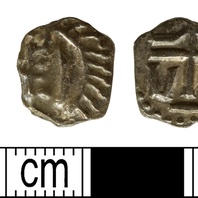
Viking Objects
Merovingian Denier (DENO-4A202A)
This is a silver denier produced by the Merovingian Franks around 700 to 750 at the mint of Marseille. It is possible that it made its way to England prior to Viking incursions but it is equally likely that the Vikings brought this coin with them as plunder after raiding in Frankia.
Read More
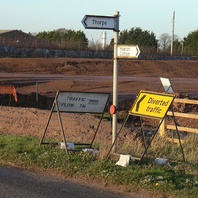
Viking Names
Thorpe
Thorpe, in the Newark Wapentake of Nottinghamshire, is simplex name from Old Norse þorp ‘a secondary settlement, a dependent outlying farmstead or hamlet’. Probably regarded as an outlying settlement from Newark.
Read More
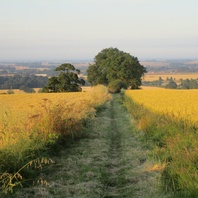
Viking Names
Hawerby
Now joined with Beesby, Hawerby is in the Haverstoe Wapentake of Lincolnshire, which has also been joined with Bradley Wapentake to form Bradley Haverstoe Wapentake. The name comes from an Old Norse male personal name Hávarðr plus the Old Norse element by ‘farmstead, village’. Interestingly, the same personal name is found in the wapentake name, Haverstoe, which combines it with the Old Norse element haugr ‘mound’. As Kenneth Cameron put it, ‘the coincidence is too great to avoid the conclusion that both are named from the same man. The site of the wapentake meeting-place is almost certainly a mound in the parish of Hawerby’. It has been suggested that the mound in question is a prehistoric round barrow (of which there is little or no trace today, as a result of ploughing) at TF 254 977, which has a fine view of the Humberside levels.
Read More
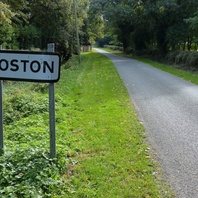
Viking Names
Foston
Foston, in the Appletree Hundred in Derbyshire, has a difficult naming history. The form of the name in Domesday Book, Farvlvestvn, seems to be from the Old Germanic male personal name Farulf with the second element Old English tun ‘farm, settlement’. It is believed that Foston, from the Old Scandinavian male personal name corresponding to the Old Norse male personal name Fótr, was originally a separate settlement site which in the course of time became more important than Farvlvestvn and displaced this name. Alternatively, the name Farulfr was common in Swedish and the first element in the Domesday form of this place-name may well be this Scandinavian name. Foston is a joint parish with Scropton.
Read More
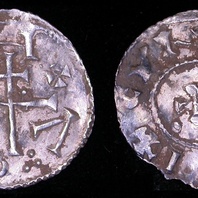
Viking Objects
Viking Silver Penny (LEIC-B230B8)
This silver ‘Cunnetti’ penny comes from the Viking kingdom of York and was minted on the authority of ‘Cnut of Northumbria’. Minting coins was a way of controlling the means of exchange within a kingdom and which created a more easily administered standardized system of trade. Moreover, the coins themselves were often used as propaganda, portraying symbols and statements that gave off a desired message. The Vikings later used the minting of coins to legitimize their own rule.
Read More
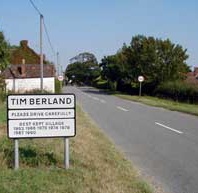
Viking Names
Timberland
Timberland, in the Langoe Wapentake of Lincolnshire, is likely an Anglo-Scandinavian hybrid coming from Old English timber ‘timber, trees; a wooden building’ and Old Norse lundr ‘a small wood’, thus giving the place-name the meaning ‘the grove where timber is obtained’. Alternatively, the first element may be Old Norse timbr ‘timber, trees, wood’.
Read More
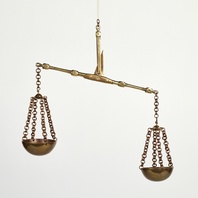
Viking Objects
Reproduction Scales
Scale pan set in copper alloy based on fragments of an arm from Cromwell, Nottinghamshire (DENO 0619F7), a pivot from Northope, Lincolnshire (NLM 6A2893), and a suspension arm and pans based on originals from York and St Peter’s Street, Northampton. Scales were a common commercial tool and would have been an important part of any exchange whether using a monetary system or a bullion system such as the one that existed in Viking-occupied areas of England.
Read More

Viking Names
Sutterby
Sutterby, in the Candleshoe Wapentake of Lincolnshire, comes from Old Norse sútari ‘a shoe-maker’ and Old Norse bý ‘a farmstead, a village’.
Read More
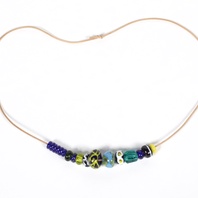
Viking Objects
Reproduction York Glass Beads
This necklace with glass beads is based on originals from York. Glass beads were a coveted item with some being imported from as far away as the Middle East. They were manufactured by specialised artisans who would heat various coloured glass rods over a furnace and melt the glass onto a metal stick to form different shaped beads.
Read More

Viking Names
Hild
Hildr is a monothematic name derived from Old Norse hildr ‘battle’, and in Old Norse mythology it was the name of a valkyrie. It is common across Scandinavia and also a common second element in a number of female personal names such as the very common Gunnhildr, Ragnhildr, etc. The name is attested as the first element in Hinderskelfe, North Yorkshire, and in Hinderwell, North Yorkshire. Hinderwell may originally have contained the name of the English St Hild of Streanæshalch (Whitby), but preserved forms of the place-name show Scandinavian grammar in the use of the genitive singular Hildar. This form is also seen in a lost field-name in Brocklesby, Lincolnshire.
